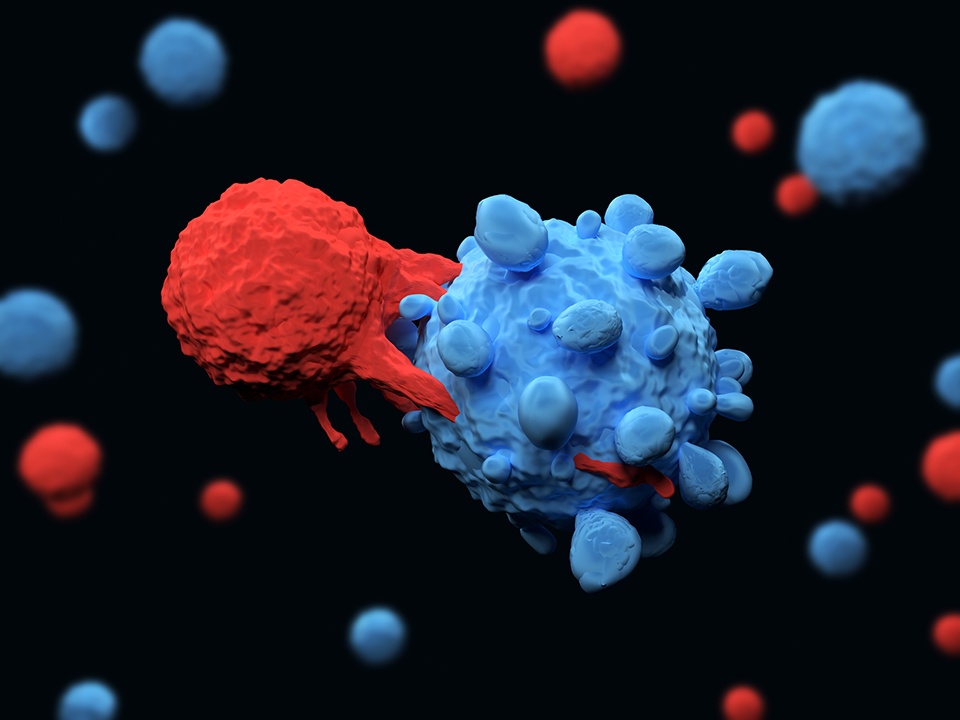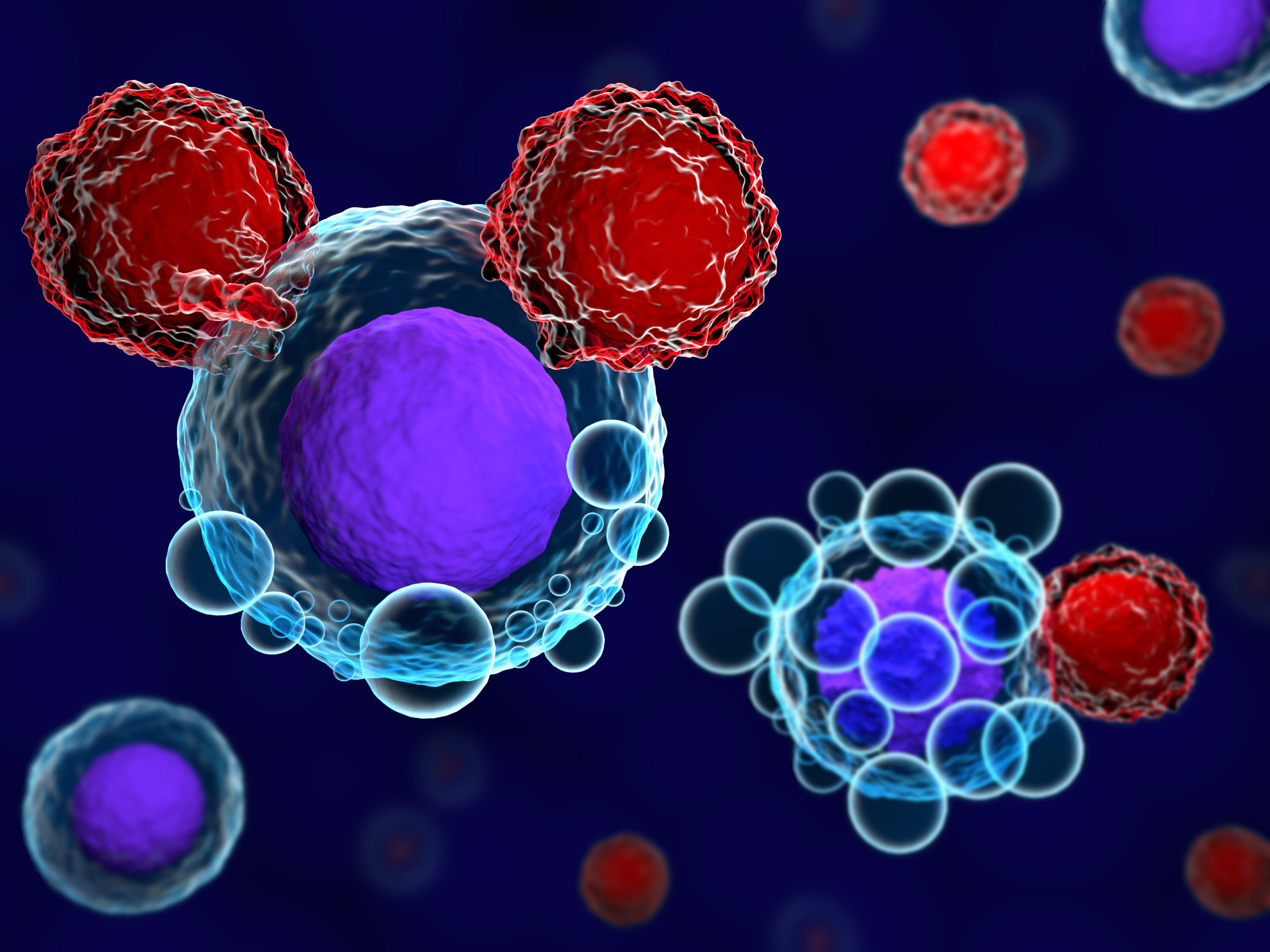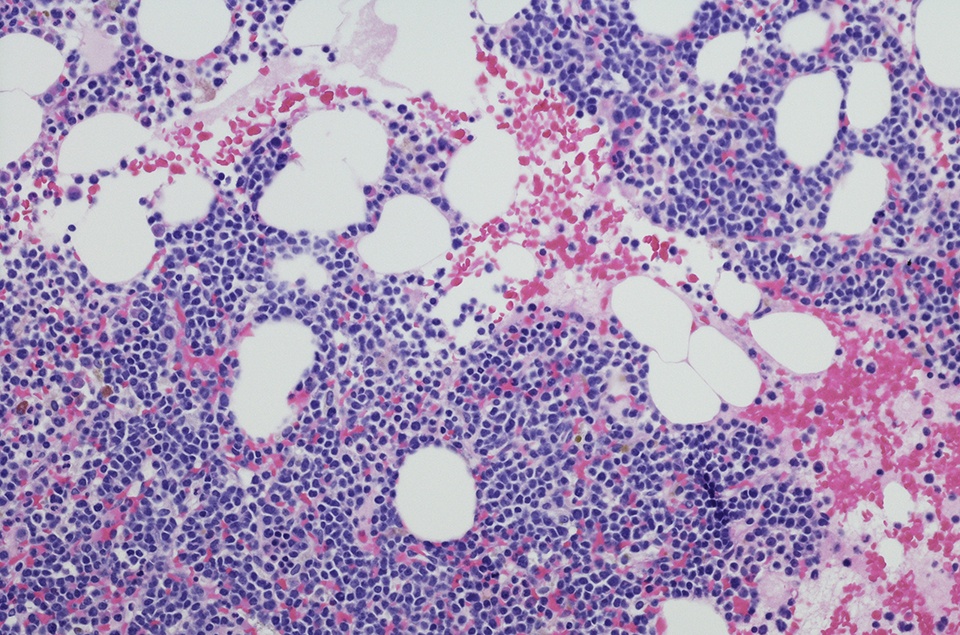
Frontline treatment with ibrutinib in combination with venetoclax induced deep responses in patients with previously untreated chronic lymphocytic leukemia (CLL), according to research presented at the 2021 American Society of Hematology Annual Meeting.
Researchers led by Paolo Ghia, MD, PhD, of Vita-Salute San Raffaele University in Milan, Italy, enrolled 168 patients with previously untreated CLL. The patients’ median age was 58 years (range = 28-69) and the following high-risk features were identified:
- unmutated IGHV (60%)
- del17p/TP53 mutation (20%)
- complex karyotype (19%)
- del11q without del17p (17%)
Patients up to 70 years of age received three cycles of ibrutinib lead-in followed by 12 cycles of oral ibrutinib 420 mg/day plus oral venetoclax ramp-up to 400 mg/day. Measurable residual disease (MRD) negativity was defined as undetectable MRD on two or more assessments three or more months apart using both peripheral blood and bone marrow samples. After 12 cycles of treatment with ibrutinib plus venetoclax, 149 patients were randomized to the following groups:
- confirmed undetectable MRD to placebo (n=43)
- confirmed undetectable MRD to ibrutinib (n=43)
- without confirmed undetectable MRD to ibrutinib (n=31)
- without confirmed undetectable MRD to ibrutinib plus venetoclax (n=32)
Overall median follow-up was 38.2 months (range = 15-47.9). After randomization, the median follow-up was 24 months (range = 5.8-33.1). Across all patients, the median treatment duration was 36.8 months (range = 0.5-47.9).
No new disease-free survival (DFS) events occurred in patients with confirmed undetectable MRD who were randomized to placebo or ibrutinib since the primary analysis. Post-randomization two-year DFS rates for patients with confirmed undetectable MRD were 95% for those randomized to placebo and 100% for those who received ibrutinib.
In the placebo and ibrutinib arms, estimated 36-month PFS rates were 95% and 100%, respectively. Modest improvements in complete response (CR) rates, including CR with incomplete bone marrow recovery (CRi), were observed. “The results in patients with confirmed undetectable MRD support the potential for treatment-free remission with fixed-duration treatment, including in patients with high-risk features,” Dr. Ghia wrote.
For patients without confirmed uMRD, greater improvements in uMRD rates and CR/CRi were observed in those who received ibrutinib plus venetoclax compared with ibrutinib alone. Estimated 36-month PFS rates were 97% across both the ibrutinib and ibrutinib plus venetoclax groups.
Across all treatment arms, the most common grade 3/4 adverse events (AEs) were neutropenia (36%), hypertension (10%), thrombocytopenia (5%), and diarrhea (5%). In 13% of patients, ibrutinib or venetoclax was discontinued because of AEs. The authors concluded that “the safety profile of ibrutinib plus venetoclax was consistent with the known safety profile for each agent.”







 © 2025 Mashup Media, LLC, a Formedics Property. All Rights Reserved.
© 2025 Mashup Media, LLC, a Formedics Property. All Rights Reserved.